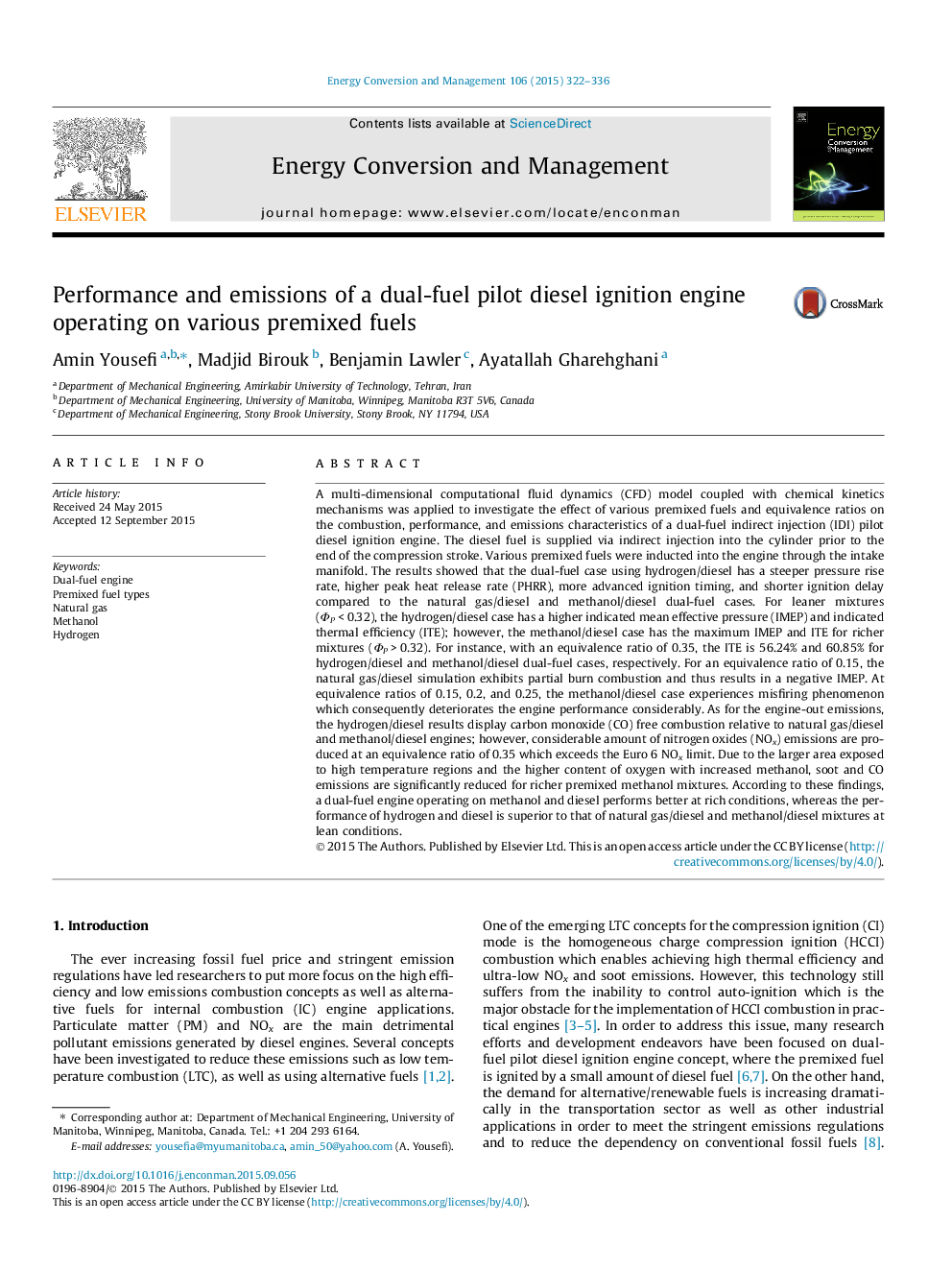| Article ID | Journal | Published Year | Pages | File Type |
|---|---|---|---|---|
| 7162021 | Energy Conversion and Management | 2015 | 15 Pages |
Abstract
A multi-dimensional computational fluid dynamics (CFD) model coupled with chemical kinetics mechanisms was applied to investigate the effect of various premixed fuels and equivalence ratios on the combustion, performance, and emissions characteristics of a dual-fuel indirect injection (IDI) pilot diesel ignition engine. The diesel fuel is supplied via indirect injection into the cylinder prior to the end of the compression stroke. Various premixed fuels were inducted into the engine through the intake manifold. The results showed that the dual-fuel case using hydrogen/diesel has a steeper pressure rise rate, higher peak heat release rate (PHRR), more advanced ignition timing, and shorter ignition delay compared to the natural gas/diesel and methanol/diesel dual-fuel cases. For leaner mixtures (ΦP < 0.32), the hydrogen/diesel case has a higher indicated mean effective pressure (IMEP) and indicated thermal efficiency (ITE); however, the methanol/diesel case has the maximum IMEP and ITE for richer mixtures (ΦP > 0.32). For instance, with an equivalence ratio of 0.35, the ITE is 56.24% and 60.85% for hydrogen/diesel and methanol/diesel dual-fuel cases, respectively. For an equivalence ratio of 0.15, the natural gas/diesel simulation exhibits partial burn combustion and thus results in a negative IMEP. At equivalence ratios of 0.15, 0.2, and 0.25, the methanol/diesel case experiences misfiring phenomenon which consequently deteriorates the engine performance considerably. As for the engine-out emissions, the hydrogen/diesel results display carbon monoxide (CO) free combustion relative to natural gas/diesel and methanol/diesel engines; however, considerable amount of nitrogen oxides (NOx) emissions are produced at an equivalence ratio of 0.35 which exceeds the Euro 6 NOx limit. Due to the larger area exposed to high temperature regions and the higher content of oxygen with increased methanol, soot and CO emissions are significantly reduced for richer premixed methanol mixtures. According to these findings, a dual-fuel engine operating on methanol and diesel performs better at rich conditions, whereas the performance of hydrogen and diesel is superior to that of natural gas/diesel and methanol/diesel mixtures at lean conditions.
Related Topics
Physical Sciences and Engineering
Energy
Energy (General)
Authors
Amin Yousefi, Madjid Birouk, Benjamin Lawler, Ayatallah Gharehghani,
